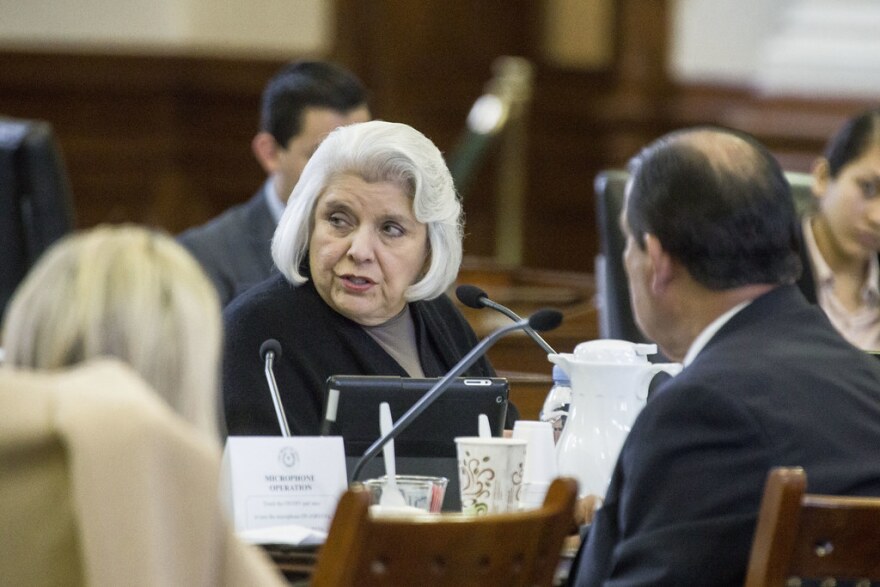The Texas Senate gave final approval early Saturday to House Bill 4, the controversial redistricting bill that shifts the state’s congressional districts in Republican’s favor. The new map could give the GOP as many as five new seats in Congress after the 2026 midterm election.
The bill now heads to Gov. Greg Abbott’s desk for his signature.
The governor has been a fierce supporter of the unconventional mid-decade redistricting plan and to take it on last month when he officially announced Texas�� first special session.
Abbott’s move came and the Department of Justice.
The Senate’s Friday vote on HB 4 marks the end to a contentious month in Texas politics filled protests, arrest threats and legislative deadlock �� plus a persistent war of words and finger pointing between the state’s Republicans and Democrats.
The redistricting effort has drawn , especially after a earlier this month by Texas House Democrats which left the chamber .
It also sparked a reactive redistricting push from , which this week designed to cancel out any Republican gains in Texas. California Gov. Gavin Newsom labeled his state’s effort a “fight to save democracy.�� Voters there get a chance to approve those maps in a November election.
Texas House Democrats returned to Austin on Monday. With a quorum back intact, the chamber to take up redistricting legislation. House Bill 4 passed on Wednesday after eight hours of extensive debate in the House.
The state Senate's debate on Friday lasted 14 hours from start to finish, and could've gone longer if (D-Houston) was able to carry out her plan to filibuster. Despite those efforts to stall final passage, the Senate passed HB 4 on a 18 - 8 vote around 12:40 am on Saturday.
A key debate point for Texas Senators: Is this map legal?
Throughout the state’s redistricting battle, Texas Democrats have called Republicans�� effort to redraw district lines an opportunistic power grab. Republicans supporting the redistricting push have openly said their aim is to in the U.S. House of Representatives ahead of next year’s election �� but have also consistently stressed that their actions are legal.
Those talking points were on full display again Friday on the Senate floor as the chamber debated the new map.

State Sen. Phil King (R-Weatherford) carried the bill in the chamber and said that, while he had nothing to do with the way the map was drawn, he backed the legislation’s redistricting objectives.
“I believe HB 4 meets the critically important goals of legality, of political performance for Republicans, and of improved compactness,�� King said.
Senate Democrats leaned heavily into his first point: legality. Throughout the day, they argued the new congressional map wouldn’t stand up to legal scrutiny because the way they’re drawn would negatively impact and dilute the votes of Black and Hispanic Texans, .
That’s where Democratic Congressman Al Green’s district is located. Under the current maps he represents Texas�� 9th Congressional District, a seat the Houstonian’s held since 2005. But the new districts outlined in HB 4 have drawn Green out, moving him into District 18.

On the Senate floor Friday, Sen. Borris Miles (D-Houston) asked King if that was done in retaliation for Rep. Green’s criticism of Trump, which included against the president.
“Was the dismantling of CD 9 retribution for Congressman Green's fighting for civil rights for his constituents,�� Miles asked King.
“No, of course not,�� King said, reiterating that he had nothing to do with how the maps are drawn. “It met with the goals that I had set for legislation. And I was also assured that it was legal in all regards.��
Sen. Miles didn’t buy it. He said he believes the maps are both illegal and designed with racial bias.
“I want you to know, I thoroughly disagree with you, because Congressional District 18 is more than ,�� Miles said. “Senate District 9 was .��
Sen. Judith Zaffirini of Laredo, the chamber’s longest-tenured Democrat, told lawmakers there are multiple reasons they oppose the maps.
“It disregards the growth and diversity of our state,�� Zaffirini said. “It further erodes the strength of minority districts, diminishing our ability to elect candidates of our choice and silencing voices that deserve to be heard.��
Next steps for the Texas Democratic Party
Although the redistricting legislation has passed the Texas Legislature, the Texas Democratic Party said it isn't done fighting.
“The sooner we can get to court the better,�� Zaffirini said during the Senate debate.

At this point, that’s the one defense that Democrats in the state have put forth in an attempt to stop the maps from taking effect.
If legal challenges are unsuccessful and Texas�� maps do take effect ahead of the 2026 midterm election, Democrats nationally will be looking to California. If those maps are approved by voters, it'll give Democrats a chance to flip as many as five seats in the midterms.
Whether or not Texas and California will be the only states to follow through with mid-decade congressional redistricting is unclear.
in Missouri, Ohio and Florida, among other states.







